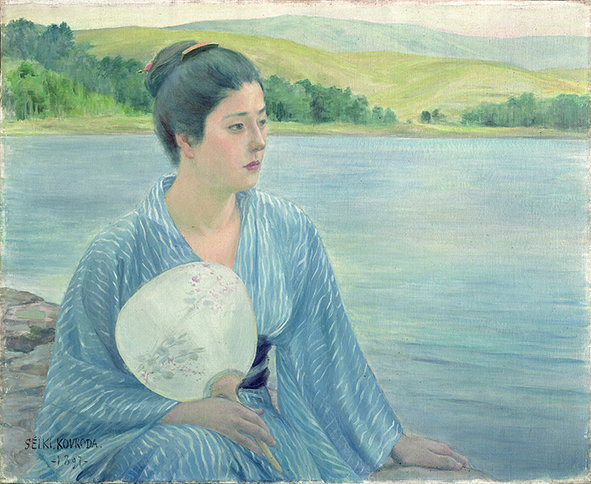An all too-common sophomoric slight to artists is: "A child could have done that." Seiki Kuroda (1866-1924), the most significant Western-style painter in Japan's early modern history, however, shows that even some young adults can not accomplish what takes years to hone.
Kuroda's "Self-portrait" (1885), created before he reached his 20s and on display at the Museum of Kyoto's latest exhibition, is in fact weak, and his other drawings and compositions in the following few years — from copies and plaster casts — do not indicate the future heights and rewards he would eventually attain. For this, the exhibition is brilliant — it shows the way his talent emerged, the skills he slowly acquired, the directions taken up or abandoned and the stylistic eclecticism Kuroda is not often widely known for, even today.
Kuroda was an aristocrat, who learned French and went to Paris in 1884 to study law at the behest of his father. Three years of that was enough, however, and he started studying painting with Raphael Colin. Before he returned to Japan in 1893, his work was academic, conventional and the compositions uninspired. He drew nudes in classical poses, painted like an amateur and even though he came back to Japan with a trove of paintings displaying new international trends that he became enormously famous for, his oeuvre was consistently uneven in quality. His "Field" (1889) and "Girl Holding a Sheep" (1899) are the epitome of Sunday-art exhibition subjects.


















With your current subscription plan you can comment on stories. However, before writing your first comment, please create a display name in the Profile section of your subscriber account page.